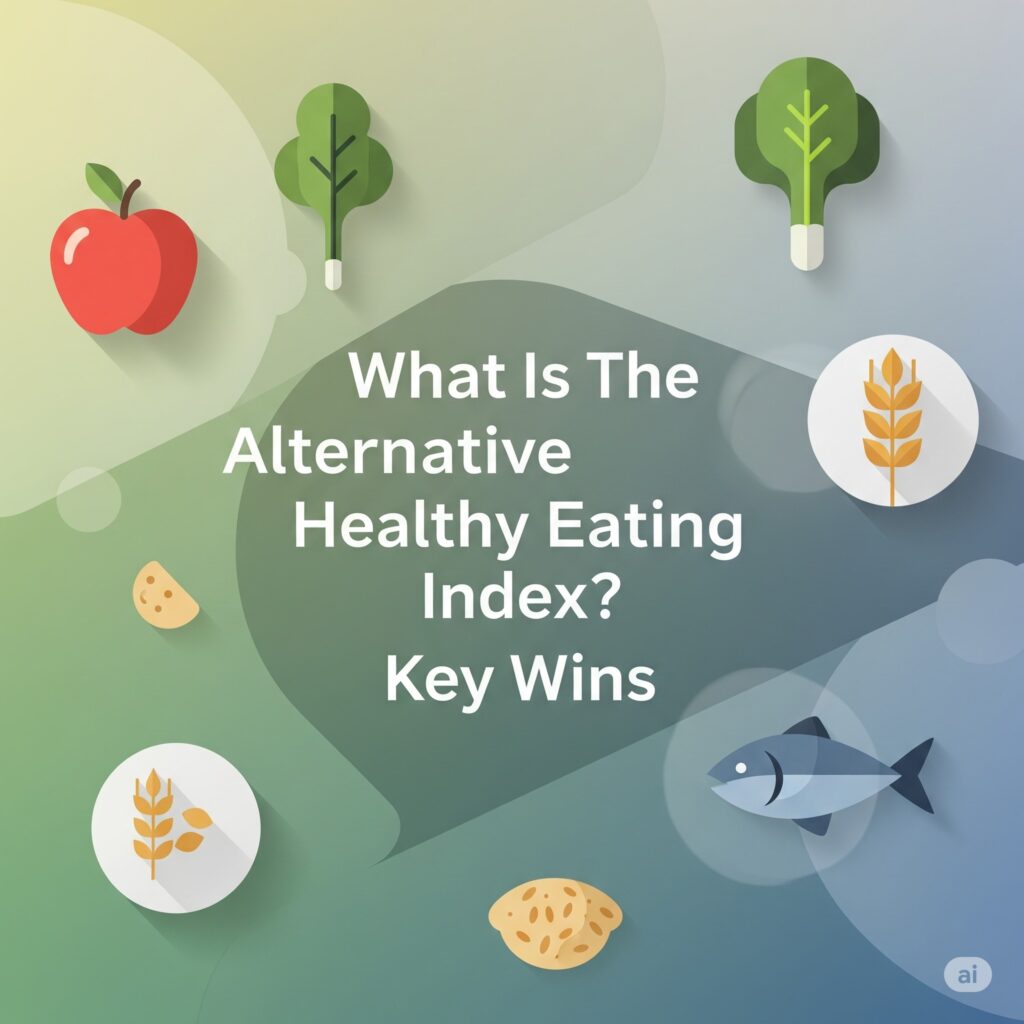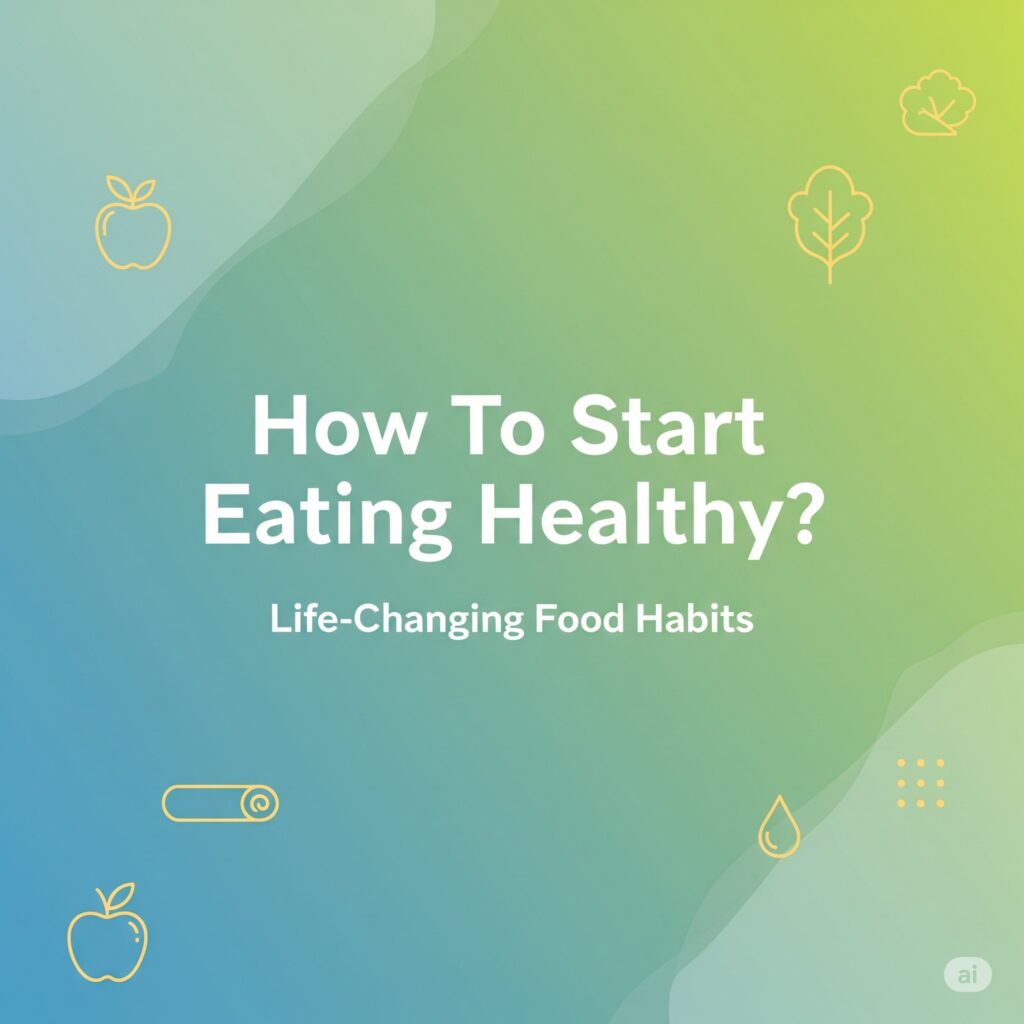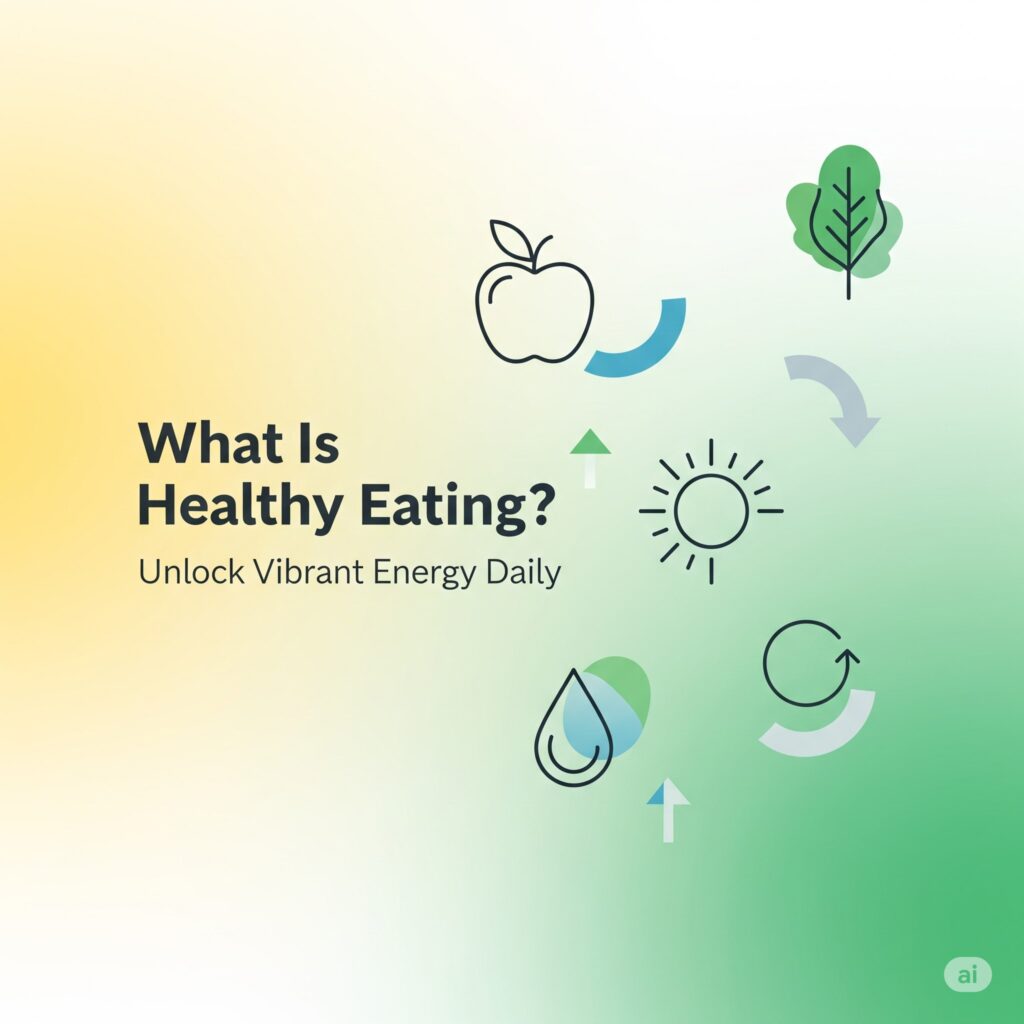Confused about healthy eating scores? Here’s a quick guide to understand what is the alternative healthy eating index and why it actually matters to your daily meals.
Trying to eat healthier but not sure where to start? You’re not alone. With so much advice online, it’s easy to feel confused. That’s where the Alternative Healthy Eating Index (AHEI) comes in.
So, what is the alternative healthy eating index exactly? It’s a scoring system that shows how well your food choices line up with eating habits that help prevent disease and support long-term health. Think of it like a nutrition report card. You get points for choosing whole grains, fruits, vegetables, and healthy fats—and fewer points for sugar and red meat.
Why does this matter? If you’ve ever wanted a simple way to track your diet and know if you’re on the right path, what is the alternative healthy eating index can help you figure that out. It’s often used in research to measure diet quality, but now, many apps and tools are using it to help everyday people like you make smarter food choices.
Whether you’re just curious or looking to improve your meals, understanding what is the alternative healthy eating index gives you a clear, science-backed way to eat better without overthinking it. Let’s break it down in a way that actually makes sense.
Table of contents
- What is the alternative healthy eating index and its components?
- How AHEI differs from HEI: What is the alternative healthy eating index?
- AI tools explained: What is the alternative healthy eating index?
- What is the alternative healthy eating index in AI nutrition scoring?
- Digital health apps and what is the alternative healthy eating index
- What is the alternative healthy eating index in personalized AI diets?
- What is the alternative healthy eating index score explained simply?
- AHEI vs guidelines: What is the alternative healthy eating index good for?
- FAQs: What is the alternative healthy eating index?
- Conclusion
What is the alternative healthy eating index and its components?
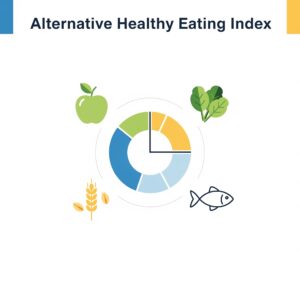
A simple way to measure how healthy your food choices are. If you’re trying to eat healthier but find food tracking apps confusing, you’re not alone. That’s where the Alternative Healthy Eating Index (AHEI) comes in. So, what is the alternative healthy eating index? It’s a scoring system that shows how closely your eating habits match healthy diet patterns that lower the risk of long-term diseases like heart problems or diabetes.
The AHEI doesn’t just count calories or carbs. It focuses on the quality of food you eat—like more fruits, fewer sugary drinks, and healthy fats. The higher your score, the better your overall diet quality.
Key components of the AHEI
The AHEI has 11 key components. Each one scores from 0 to 10, and all together, they make up a total score of 110. Here’s what it looks at:
- Vegetables – more variety means higher points
- Fruits – especially whole fruits (not juice)
- Whole grains – like oats, brown rice, and quinoa
- Sugar-sweetened drinks – fewer equals better score
- Red and processed meats – less is better
- Trans fats – aim for zero
- Omega-3 fats – found in fish and some seeds
- Polyunsaturated fats – like those in nuts and sunflower oil
- Sodium – lower intake gets higher points
- Alcohol – moderate intake scores better
- Legumes and nuts – more of these boosts your score
Why this matters today?
So, what is the alternative healthy eating index in real life? It helps you understand if your daily meals support long-term health. For example, if you’re grabbing fast food often or skipping veggies, your AHEI score would be low. But if you’re eating homemade meals with more whole grains and fruits, you’d rank higher.
Many students use the AHEI today with nutrition apps or during health projects to see where they stand. It’s a smarter way to learn about what’s actually good for you—not just what’s low in calories.
AHEI vs generic diet scores
Some apps give random “green” or “red” food grades. But what is the alternative healthy eating index doing differently? It uses actual scientific links between diet and disease to create scores. It’s not just about weight loss—it’s about staying healthy in the long run.
How AHEI differs from HEI: What is the alternative healthy eating index?
Two popular diet scores—but not the same thing. You’ve probably heard of the Healthy Eating Index (HEI). It’s been used in schools, apps, and health studies for years. But now there’s another tool: the Alternative Healthy Eating Index (AHEI). So, how are they different? And what is the alternative healthy eating index all about?
The big difference is their focus. HEI looks at how well your eating matches general dietary guidelines. AHEI, on the other hand, tracks how your diet connects to actual health outcomes—like lower risks of heart disease or diabetes. That’s what makes it stand out.
HEI focuses on guidelines
HEI is based on the Dietary Guidelines for Americans. It scores things like fruit intake, dairy, grains, and variety. But it doesn’t always show how your diet affects your long-term health. That means someone can score high on HEI while still eating foods that aren’t great for disease prevention.
For example, fruit juice and whole fruit both score well on HEI. But studies show that eating whole fruit is healthier. That’s where AHEI makes a smarter call.
AHEI focuses on disease prevention
So, what is the alternative healthy eating index doing differently? It was created by Harvard researchers to highlight what actually lowers health risks. AHEI gives higher points for whole fruits over juice, uses stricter scoring for red meat, and rewards healthy fats like omega-3s.
It’s more about what helps you stay healthy in real life—not just what’s listed on a government chart.
Why AHEI might be better for you?
If you want to use a score that reflects real health impact, AHEI is the better pick. What is the alternative healthy eating index giving you? A sharper picture of whether your food choices help prevent disease and support long-term health.
That’s especially helpful if you’re trying to track progress in a nutrition class or improve your meals without guessing. The AHEI score feels more personal and modern—and it’s based on how food really works in your body.
AI tools explained: What is the alternative healthy eating index?

How smart tech helps you eat healthier? If you’ve ever used a food-tracking app, you’ve seen how tech can make healthy eating easier. Now, some apps go beyond counting calories—they actually help score your diet using smart tools. One of the scores you might notice is the AHEI. But first, what is the alternative healthy eating index and how do AI tools connect to it?
AI tools can now analyze your meals, spot patterns, and even give you a health score. These tools often use AHEI because it’s focused on real health outcomes, like lower risk of heart disease or diabetes. That makes it more helpful than just tracking macros.
How AI tools use AHEI
AI-powered apps scan your food log, detect what you’re eating, and match it to the AHEI scoring system. For example, if you log whole grains, leafy greens, or nuts, your score goes up. If you eat lots of red meat or sugary drinks, your score goes down. It’s that simple.
So when you ask, what is the alternative healthy eating index, think of it as a smart guide that AI uses to help you see how healthy your meals really are.
Why students like these tools?
Most students don’t have time to track every detail of their meals. That’s why AI tools are useful—they make it quick and easy. You just snap a photo or enter your meal, and the app handles the rest.
And here’s where it gets cool: some AI apps now show your AHEI score right after you log a meal. You’ll know instantly if your food choice is helping or hurting your health. That’s one big reason why many are asking: what is the alternative healthy eating index, and how can it help me eat better?
Real-time feedback, real-life choices
When your phone gives you a diet score in seconds, it’s easier to make better choices. Instead of just showing calories, AI now helps you see food in terms of long-term impact. That’s why more tools use AHEI—it reflects the quality of your diet, not just the numbers.
So next time you’re logging lunch, remember: what is the alternative healthy eating index? It’s the score smart apps use to help you eat for your future, not just today.
What is the alternative healthy eating index in AI nutrition scoring?
Why smart apps use AHEI to measure food quality? AI is changing how we eat, track, and understand food. Many nutrition apps now go beyond calories and carbs. They look at food quality using scoring systems like AHEI. So, what is the alternative healthy eating index in AI nutrition scoring? It’s a smart way for apps to show how healthy your meals really are.
Instead of guessing if your lunch is “healthy,” AI tools score it based on how it supports your long-term health. That’s where AHEI comes in. It checks what’s on your plate and gives you a score based on foods linked to lower risks of heart disease, diabetes, and more.
AHEI gives smarter scores than calorie counting
Most tracking apps used to focus only on calories. But calories alone don’t show if a meal is actually good for you. AI tools using AHEI consider things like fruits, veggies, whole grains, and healthy fats. So, when you ask what is the alternative healthy eating index, think of it as a way to measure food quality—not just quantity.
For example, eating 500 calories of chips isn’t the same as 500 calories of salmon and quinoa. AHEI helps AI tell the difference.
How AI uses AHEI in real time?
Today’s AI nutrition tools can scan your meal photo or food log and match it to the AHEI scoring system. They check for processed foods, sugar, fiber, and more. Then they give you a clear score, so you instantly know if your meal supports your health.
That means no more guessing games. Want to know what is the alternative healthy eating index doing in your app? It’s helping AI give you advice that’s backed by science—not just trends.
Why this matters for your daily choices?
For students balancing classes, work, and quick meals, this kind of scoring system is super useful. You can see how your meals rank without spending hours researching nutrition.
So, what is the alternative healthy eating index doing in AI nutrition scoring? It’s turning your daily food logs into helpful insights that actually matter for your future health.
Digital health apps and what is the alternative healthy eating index

How your phone helps you eat smarter with AHEI scores? These days, your phone can do more than count steps or remind you to drink water. It can actually help you eat better. Many digital health apps now use smart scoring systems like AHEI to rate the quality of your food choices. But first, what is the alternative healthy eating index, and how do these apps use it?
The AHEI, or Alternative Healthy Eating Index, is used to measure how well your meals support long-term health. It looks at real food choices—not just calories. Apps use this index to score your daily eating habits, helping you understand how your meals affect your body over time.
How digital health apps use AHEI? What is the alternative healthy eating index
When you log a meal in apps like MyFitnessPal, Cronometer, or newer AI-based tools, some of them check your food against the AHEI scoring system. If you eat whole grains, leafy greens, or nuts, your score goes up. Too much sugar or red meat? Your score drops.
That’s where what is the alternative healthy eating index becomes helpful. It gives you real feedback on your choices, not just numbers that are hard to understand. And you don’t need to be a nutrition expert—the app does the work for you.
Instant feedback, better choices
Most students don’t have time to analyze their meals. Digital health apps make it fast and easy. You enter your food, and the app tells you how your choices rank based on AHEI. It’s a simple way to improve your eating habits every day.
So, if you’re asking what is the alternative healthy eating index doing in your food app, the answer is simple—it’s helping you make smarter, healthier choices with just a few taps.
Why it works for student lifestyles?
Between classes, assignments, and hanging out with friends, eating healthy isn’t always easy. But with AHEI scores built into your favorite apps, you don’t have to guess. You get clear feedback that helps you stay on track—even on a busy schedule.
So, what is the alternative healthy eating index in digital health apps? It’s a powerful tool that turns your phone into a smart health coach, helping you eat better, one meal at a time.
What is the alternative healthy eating index in personalized AI diets?
Smart diets made for you—with real health goals. Ever wish your diet could adjust to your needs, instead of following a one-size-fits-all plan? That’s what personalized AI diets aim to do. They use data—like your age, activity, food preferences, and health goals—to build a plan just for you. And here’s where it gets interesting: many of these smart diets are now powered by AHEI scoring. So, what is the alternative healthy eating index doing in this setup?
It helps AI decide if your meals are truly healthy based on long-term health research. The score focuses on disease prevention, not just weight loss. That’s a big win for anyone who wants to eat better and stay healthy in the future.
How personalization and AHEI work together?
Let’s say you like rice bowls, but you also want more fiber. AI looks at your past meals, checks the ingredients, and suggests small changes—like swapping white rice for quinoa. Then it scores your updated meal using AHEI. That’s how the system works behind the scenes.
When you ask what is the alternative healthy eating index, think of it as the tool that helps AI shape your meal plan based on proven science, not random diet fads.
Real changes, real results What is the alternative healthy eating index
The best part about personalized AI diets? They feel real. You still eat foods you enjoy, but the suggestions help you get more from every bite. AHEI gives the AI a way to check if those choices are working for your health goals.
That’s why more students are wondering: what is the alternative healthy eating index, and why is it in my AI diet app? It’s because the index helps the app give you better, more personalized advice—without all the stress of meal planning.
A new way to stay healthy without the guesswork
Tracking your diet doesn’t have to be boring or overwhelming. With AI and AHEI working together, you get meal plans that adjust to you—and scores that show real progress.
So next time you open your health app and see a food score or a new recipe suggestion, ask yourself: what is the alternative healthy eating index doing here? It’s making your diet smarter, more personal, and better for your long-term health.
What is the alternative healthy eating index score explained simply?
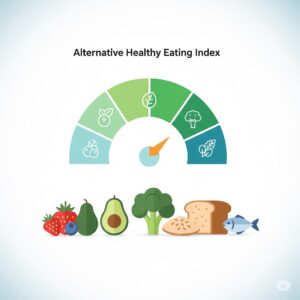
A clear way to understand how healthy your food is. If you’ve ever wondered how to tell if your meals are actually good for you, the AHEI score can help. But what is the alternative healthy eating index score, and how does it work? Let’s break it down in a simple way that actually makes sense.
The Alternative Healthy Eating Index (AHEI) gives your diet a score between 0 and 110. The higher the number, the better your diet supports long-term health. It doesn’t count calories or carbs—it looks at the quality of what you eat. That includes whole grains, fruits, veggies, healthy fats, and more.
What the score is based on?
The AHEI score has 11 parts, and each one gets a score from 0 to 10. Here’s what it checks:
- How many veggies and fruits do you eat?
- If you choose whole grains instead of white bread
- How often do you drink sugary sodas?
- If you avoid red or processed meats
- Whether you include healthy fats, like omega-3s
- And even if you eat enough nuts or legumes
So, what is the alternative healthy eating index doing with all this info? It adds up the points to tell you how healthy your diet really is.
Why your score matters? What is the alternative healthy eating index
Let’s say your total score is 85. That means your eating habits are pretty solid! But if it’s closer to 50, you might want to swap a few foods. The score helps you make smarter choices without feeling overwhelmed.
This is why students often ask, what is the alternative healthy eating index score, and how can I improve it? Because it gives you real, simple feedback you can use every day.
How to check your own AHEI score?
Some food tracking apps now include AHEI scoring. You just log your meals like usual, and the app calculates your score based on the foods you eat. No guessing or complex math—just clear, helpful info.
So next time you’re planning a meal, remember: what is the alternative healthy eating index? It’s your easy-to-understand guide to eating healthier, one score at a time.
AHEI vs guidelines: What is the alternative healthy eating index good for?
Why AHEI works better than basic food rules? We’ve all seen those food pyramids or “eat more veggies” charts in school. But they don’t always help us figure out what to eat day to day. That’s where AHEI comes in. So, what is the alternative healthy eating index good for? It’s a smarter way to track your diet and see how it affects your health—not just if it follows a rulebook.
While general guidelines are helpful, they often stay the same for everyone. AHEI takes it a step further by focusing on the actual impact your food choices have on your body. It was built to reflect what really lowers the risk of things like heart disease, diabetes, and other long-term issues.
AHEI focuses on real results, not just rules
The usual guidelines might tell you to eat grains or drink milk, but they don’t say which grains or how much is too much sugar. That’s where AHEI is different. It gives you a clear score based on your food quality.
So when someone asks, what is the alternative healthy eating index, you can say it’s a tool that helps measure how healthy your meals are—not just whether they follow outdated food charts.
Why AHEI is helpful for everyday eating?
If you’re a student with a packed schedule, you don’t have time to analyze every food label. AHEI helps by giving you a score that shows if your meals are doing your body good. You don’t need to follow every rule—you just need to focus on foods that improve your score.
And that’s what makes students ask, what is the alternative healthy eating index good for? It’s good for real life. It helps you eat better without needing a nutrition degree.
A simple guide for smart food choices
Instead of guessing or stressing ov3er food rules, AHEI gives you a way to know what works. Whether you’re meal prepping, eating out, or grabbing snacks between classes, it helps you make choices that support your health long-term.
So remember: what is the alternative healthy eating index good for? It’s your shortcut to smarter, healthier eating—based on science, not just guidelines.
FAQs: What is the alternative healthy eating index?
What does AHEI stand for?
AHEI stands for Alternative Healthy Eating Index. It’s a score that shows how healthy your diet is. It checks the types of food you eat and how often you eat them. The score can help you understand if your meals support long-term health.
Why is the AHEI important for students?
Students often grab fast food or skip meals. AHEI helps you know if your choices are still healthy. It doesn’t just focus on calories. It checks food quality. That makes it easier to eat better, even on a busy schedule.
What is the alternative healthy eating index score based on?
The score is based on 11 food categories. These include fruits, veggies, whole grains, sugar intake, healthy fats, and more. Each category gets a score from 0 to 10. The total score shows how balanced and healthy your diet is.
How is AHEI different from regular diet tips?
Most diet tips tell you what to eat in general. AHEI gives you a number based on your real choices. That’s why many students ask, what is the alternative healthy eating index? It’s a smarter way to see if your meals match up with good health habits.
Can I track my AHEI score with an app?
Yes, some food-tracking apps show your AHEI score. These apps look at what you eat and match it to the AHEI system. This helps you improve your meals without a lot of work. It also answers the question: what is the alternative healthy eating index doing in my app?
Is AHEI better than counting calories?
Yes, for most people, it is. Calories show how much you eat, but not what you eat. AHEI shows if you’re eating food that helps your body stay strong. So next time you wonder, what is the alternative healthy eating index, think of it as a better way to eat smart.
Conclusion
Healthy eating can feel confusing, but AHEI makes it easier. It gives you a clear score to understand how your food choices affect your health. So, what is the alternative healthy eating index? It’s a tool that looks at food quality—not just calories—and helps you build better eating habits without all the guesswork.
You don’t need to be perfect. Even small changes can boost your AHEI score. The key is to choose foods that help your body in the long run. Now that you know what is the alternative healthy eating index, try using it to track your meals. Some apps already include it, and it’s a great way to stay on track.
Still wondering what is the alternative healthy eating index good for? It’s for anyone who wants to eat smarter—starting today.

